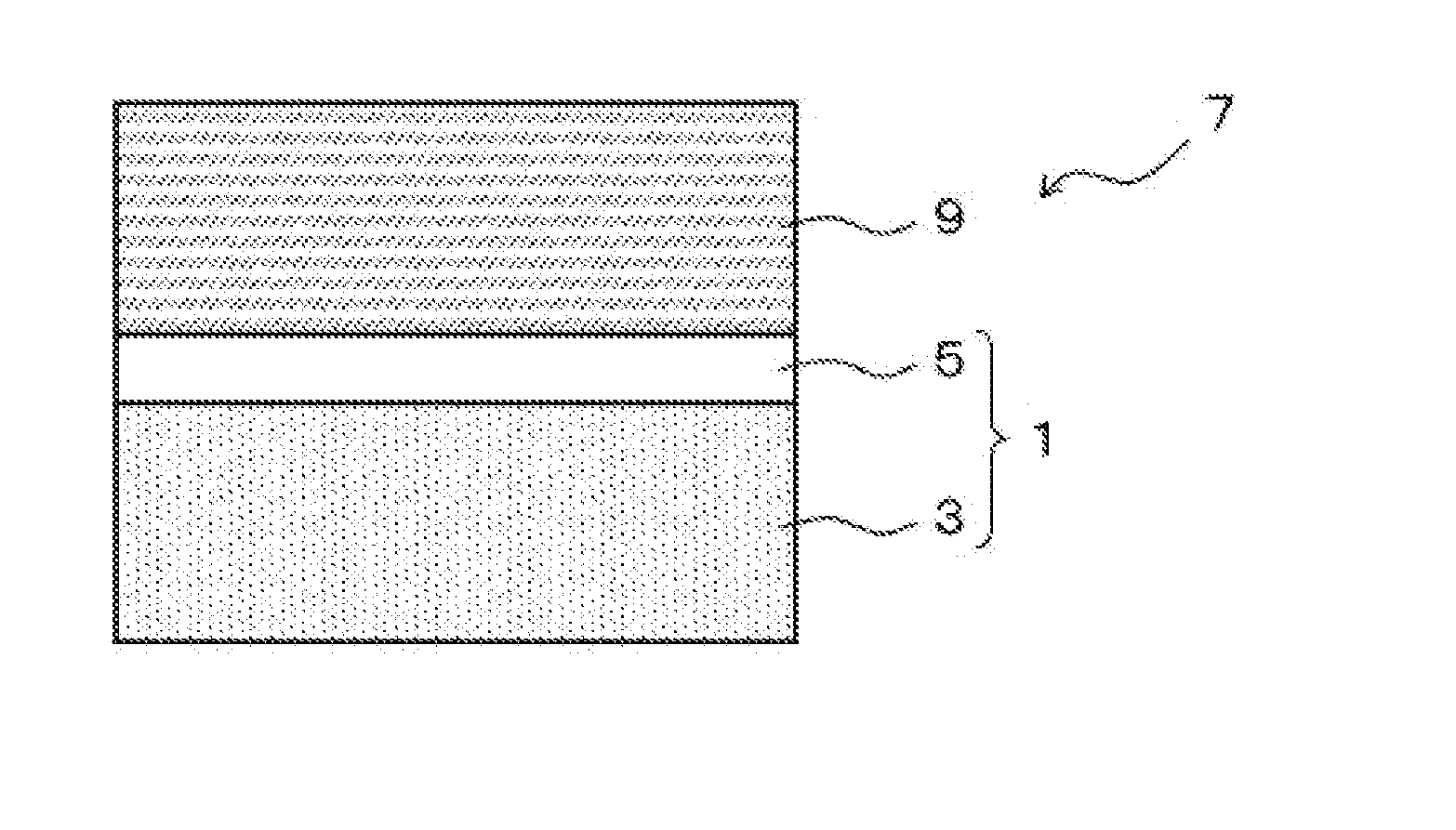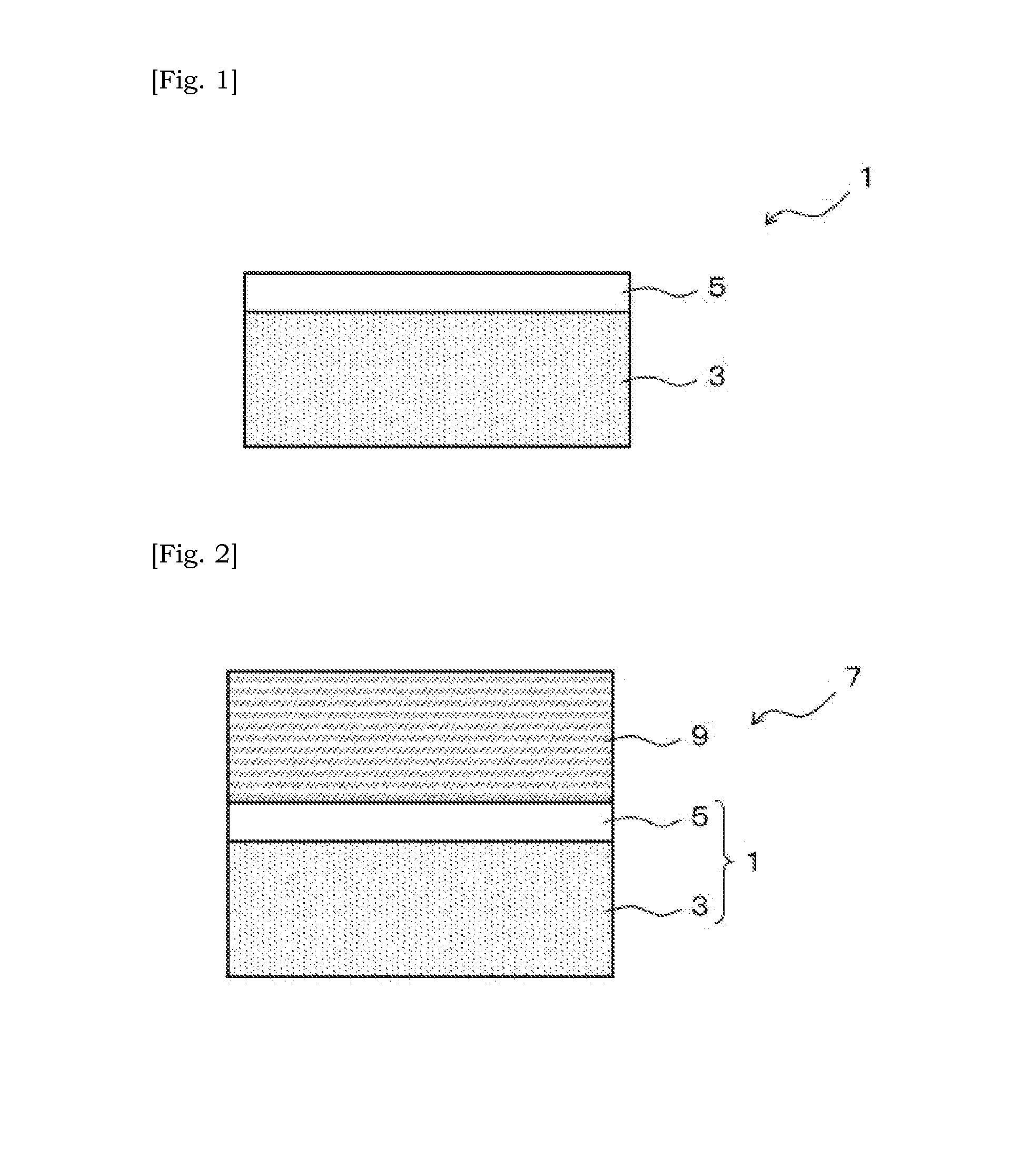Collector, electrode structure, non-aqueous electrolyte battery, and electrical storage device
a non-aqueous electrolyte battery and electrode structure technology, applied in the direction of electrolytic capacitors, cell components, electrochemical generators, etc., can solve the problems of large strength decline, difficulty in improving strength, and reducing output voltage, etc., to achieve high rate characteristics, high electrical conductivity, and high strength
- Summary
- Abstract
- Description
- Claims
- Application Information
AI Technical Summary
Benefits of technology
Problems solved by technology
Method used
Image
Examples
examples
[0090]Examples in which the current collector of the present invention was applied to a lithium ion battery, will be explained hereinafter.
1. Aluminum Alloy Foil
[0091]Aluminum alloys having compositions designated in Table 1 were subjected to casting using semi-continuous casting to prepare ingots with a thickness of 500 mm. Next, those ingots were subjected to surface finishing, followed by homogenizing treatment under conditions designated in Table 1. Then, cold rolling was performed to produce sheets with a thickness of 0.8 mm. Subsequently, intermediate annealing was performed at 440° C. for 3 hours, followed by cold rolling and foil rolling to give an aluminum alloy foil with a thickness of 12 μm or 15 μm.
[0092]The tensile strength of the aluminum alloy foil which had been cut out in a direction of the rolling was measured with an Instron tension tester AG-10kNX, manufactured by Shimadzu Corporation. The measurement was performed under conditions with a test piece size of 10 mm...
examples 1 to 6 , examples 11 to 16
Examples 1 to 6, Examples 11 to 16, Comparative Examples 1 to 2, Comparative Examples 4 to 5, Comparative Examples 11 to 12
[0096]An acryl copolymer containing acrylic acid, butyl acrylate, and methyl acrylate as the monomer by a formulation ratio of 5:45:50 was polymerized so that the weight average molecular weight reaches 100,000. Then, the resin was dispersed in water by using a surfactant to give a resin solution. Acetylene black was added to the resin solution by 60 mass % with respect to the solid content of the resin. The mixture was then dispersed with a ball mill for 8 hours to give a coating material. The coating material thus obtained was coated on one side of the aluminum foil shown in Table 1 (JIS A1085) using a bar coater, and then the coating was heated for 30 seconds so that the final temperature of the substrate reaches the temperature shown in Table 2. The current collector was obtained accordingly. The thickness of the current collector after baking was 2 μm. This...
examples 7 to 8 , examples 17 to 18
Examples 7 to 8, Examples 17 to 18, Comparative Examples 6 to 7, Comparative Examples 13 to 14
[0098]A resin solution was prepared by dissolving 80 mass % of soluble nitrocellulose (JIS K6703L1 / 4) as the main resin (here, the weight of the soluble nitrocellulose is a weight obtained by subtracting the weight of the wetting agent), and 20 mass % of butyl etherified melamine (number average molecular weight of 2700) as the hardening agent, in an organic solvent of methyl ethyl ketone (MEK). Then, acetylene black was added to the resin solution by 60 mass % with respect to the solid content (by solids of the resin, hereinafter the same) of the resin. The mixture was then dispersed with a ball mill for 8 hours to give a coating material. The coating material thus obtained was coated on one side of the aluminum foil shown in Table 1 (JIS A1085) using a bar coater, and then the coating was heated for 30 seconds so that the final temperature of the substrate reaches the temperature shown in...
PUM
| Property | Measurement | Unit |
|---|---|---|
| yield strength | aaaaa | aaaaa |
| tensile strength | aaaaa | aaaaa |
| yield strength | aaaaa | aaaaa |
Abstract
Description
Claims
Application Information
 Login to View More
Login to View More - R&D
- Intellectual Property
- Life Sciences
- Materials
- Tech Scout
- Unparalleled Data Quality
- Higher Quality Content
- 60% Fewer Hallucinations
Browse by: Latest US Patents, China's latest patents, Technical Efficacy Thesaurus, Application Domain, Technology Topic, Popular Technical Reports.
© 2025 PatSnap. All rights reserved.Legal|Privacy policy|Modern Slavery Act Transparency Statement|Sitemap|About US| Contact US: help@patsnap.com


